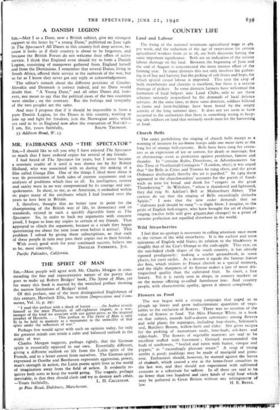Church Bells
The order prohibiting the ringing of church bells except as a warning of invasion by air-borne troops adds one more item to the long list of strange bell-customs. Bells have been rung for centu- ries as an expression of joy or sorrow, for death or marriage, fire or christening—even as protection against pestilence, famine and thunder. In " certain Rules, Directions, or Advertisements for this Time of Pestilentiall Contagion " (London, 1625), it was urged that " the Bells in Cities and Townes be rung often, and the great Ordnance discharged; thereby the air is purified." In 1464 there appeared in the churchwardens' accounts for the parish of Sand- wich an item for bread and drink for " ryngers in the great Thunderying." In Wiltshire, " when it thundered and lightened, they did ring St. Adeline's Bell at Malmesbury Abbey. The curious do say that the ringing of Bells exceedingly disturbs Spirits." I note that the new order demands that no " elaborate peal should be rung "—a slight blow, I imagine, to the pride of English bell-ringers, who have brought the art of change- ringing (twelve bells will give 479,001,600 changes) to a point of extreme perfection not equalled elsewhere in the world.






























 Previous page
Previous page